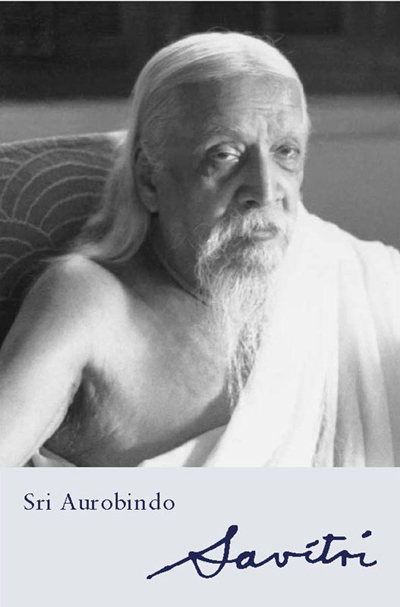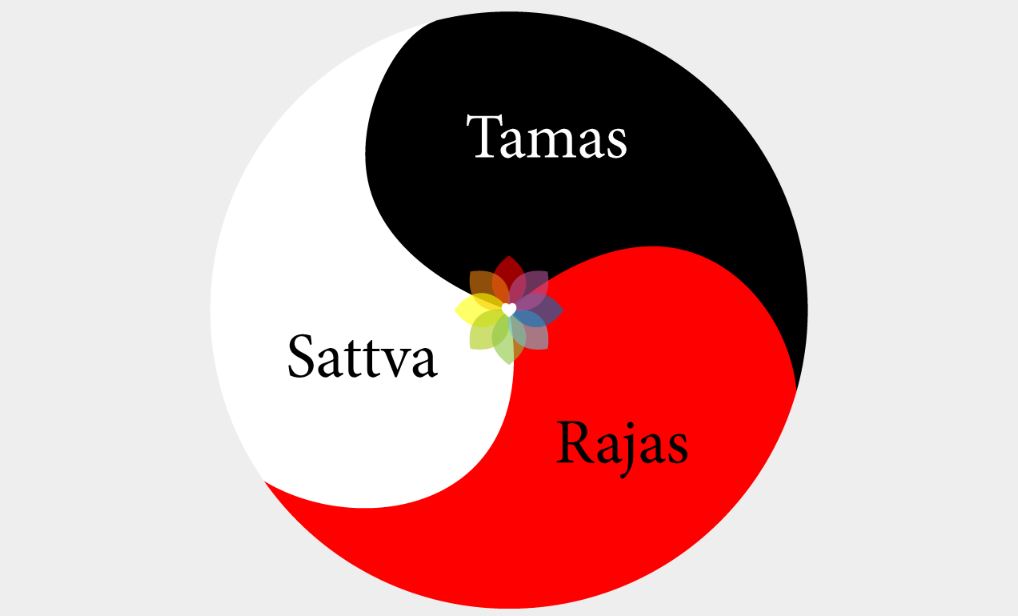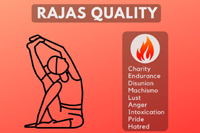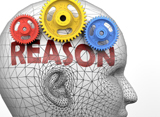Yogic insights into human psychology
Human Relationships and Yoga — I
Abstract
The field of human relationships is one of the most complex and challenging aspects of human existence. Yet how little do we know about it? It is not a subject we are taught in school. Whatever we learn about it is through the school of nature and by the time we have learnt our lessons it is often too late. These few articles are an attempt to understand this aspect from the yogic standpoint and see what it has to say about it.
Introduction
Of all the fields of human life one of the most complex, the most challenging and yet, perhaps for this very reason, the least understood is the field of human relationships. It is much easier to send a rocket to Mars or discover the quantum laws within the atom, but it is far more difficult to discover who we are and why we do what we do. One must admit that the field of psychology with all its theories is still in its infancy. Especially in times as these, where the focus has shifted from the inner to the outer, from the deeper spiritual base to the surface behaviour and material mechanics of the brain, we see hardly any hope of a deeper and enduring truth that can remould the way we relate with fellow-humans and with creation at large. There is however a treasure-trove of discoveries made by the yogis of yore that is found missing in all our academic discussions. Even when admitted, there is not much spoken beyond techniques and methods, especially breathing techniques and certain forms of meditation. What is understood is even less.
The reason perhaps lies in the simple fact that our academia is too much oriented towards a Western paradigm of understanding life and with all the information pouring in along the waters of a materialistic approach to life, there is very little time left to turn towards other sources. Sometimes it is the sheer volume of information that overwhelms us and we begin to believe that whatever is more is true! And yet to those who have seen both, a single phrase from the Īśā Upaniṣad or even a quarter verse, or just one such as Īśā vāsyamidaṁ sarvaṁ, all this is for the habitation of the Lord, can open the doors to an infinite meaning than a whole library of books on human psychology can.
Yet we cannot say that yoga and yogis are not responsible for this lack of interest in deeper spiritual truths that can make our life beautiful and sublime. Yoga has often been projected as a means for the ultimate goal of escape from worldly life. Whatever health and other benefits that are claimed for it, — and there are quite a lot, yoga’s ultimate aim is still understood to be other-worldly. The manifold activities and relationships of this life are therefore seen at best only as a preparation for the afterlife which is why very often yoga psychology and yoga philosophy never finds full appeal in a modern humanity that aspires more than ever before for terrestrial perfection. And yet when we take a closer look at the yogis of yore in the very land of Yoga we do not find them as a spent-up force seeking an escape route but as great creators, discoverers, warriors, rulers, kings, lovers and scientists and artists and thinkers in almost every field of human endeavour. It is towards this ancient Light of yogic wisdom, enhanced amply by the new revelations given by Sri Aurobindo and the Mother, that we shall turn to find what gems there are in its treasure-troves that can make our life, especially our human relationships, better and better. But first let us take a look at a human being itself, in all his inherent complexity. For unless we understand what a human being is, we cannot understand what he does and should do and how he can operate better by upgrading his psychological system and evolving to a higher and sublime humanity. The very basis of yoga is concentrated evolution and if our present human self is not capable of a greater, truer, nobler living, then yoga gives us the means to evolve consciously and thereby improve upon our life. The rule here is that what we are within is that outside we shall enjoy.
The human predicament
Let us then try to understand a human being as he stands today with an eye on what he can yet be in the future. We must admit that of all creatures, whether in nature or made by man, man is by far the most complex organism so far. This complexity arises from three main sources. First and foremost man is the end-product (so far) of a long and complex evolution. He not only summarises but also compresses within him all the past that has gone before him. All the layers of evolution continue to exist within him, not only in some subconscious part but in the very basic structure and functioning of his body.
Our reactions and responses are still burdened by the animal past and even though our thoughts and intelligence strive for something better and higher the animal is still there, hidden in the very cells, in the very touch and twitch of the involuntary nerves. This often leads to a dissonance between our thoughts and actions, creating a big confusion for us and for others.
The second complexity arises due to the presence of a subjective space of which man has become aware. He has a world apart from the physical one that he inhabits. It is a world of thoughts and feelings and imaginations and wishes and hopes and fears and fantasies, a world of anxieties and dreams where gods and demons clash, claiming his mind-space. He is almost at perpetual war within. His true intent is hidden deep within and very often what he professes and claims as his driving motive is far from true. He does not quite understand his own present state, so to speak. This is the second source of confusion, leading to conflict of choices and decisions, that, unlike the animal driven by instincts, have to be made in man by conscious choices. To add to the distresses, these choices have to be made by him in a state wherein he does not know the effect and cannot be certain about the future in any way.
Finally, unlike the beast, man is burdened with the future. There is something in him that keeps pushing him towards a yet undisclosed future as if all his present (and his past) were forever straining towards the future, of which he hardly knows and can ever know with certitude. Pushed by the past, trapped uncomfortably in the present, pulled and straining towards the future, man is yet to discover himself and the true law of his being. Sri Aurobindo reveals this strange predicament of man poignantly, thus:
“Assailed on earth and unassured of heaven,
Descended here unhappy and sublime,
A link between the demigod and the beast,
He knows not his own greatness nor his aim;
He has forgotten why he has come and whence.
His spirit and his members are at war;
His heights break off too low to reach the skies,
His mass is buried in the animal mire.
A strange antinomy is his nature’s rule.
A riddle of opposites is made his field:
Freedom he asks but needs to live in bonds,
He has need of darkness to perceive some light
And need of grief to feel a little bliss;
He has need of death to find a greater life.
All sides he sees and turns to every call;
He has no certain light by which to walk;
His life is a blind-man’s-buff, a hide-and-seek;
He seeks himself and from himself he runs;
Meeting himself, he thinks it other than he.
Always he builds, but finds no constant ground,
Always he journeys, but nowhere arrives;
He would guide the world, himself he cannot guide;
He would save his soul, his life he cannot save.
The light his soul had brought his mind has lost;
All he has learned is soon again in doubt;
A sun to him seems the shadow of his thoughts,
Then all is shadow again and nothing true:
Unknowing what he does or whither he tends
He fabricates signs of the Real in Ignorance.
He has hitched his mortal error to Truth’s star.
Wisdom attracts him with her luminous masks,
But never has he seen the face behind:
A giant Ignorance surrounds his lore.
Assigned to meet the cosmic mystery
In the dumb figure of a material world,
His passport of entry false and his personage,
He is compelled to be what he is not;
He obeys the Inconscience he had come to rule
And sinks in Matter to fulfil his soul.
Awakened from her lower driven forms
The Earth-Mother gave her forces to his hands
And painfully he guards the heavy trust;
His mind is a lost torch-bearer on her roads.
Illumining breath to think and plasm to feel,
He labours with his slow and sceptic brain
Helped by the reason’s vacillating fires,
To make his thought and will a magic door
For knowledge to enter the darkness of the world
And love to rule a realm of strife and hate.
A mind impotent to reconcile heaven and earth
And tied to Matter with a thousand bonds,
He lifts himself to be a conscious god (1). “
To imagine that two human beings can perfectly adapt to each other when each unit itself is not fully adapted to its own complexity is to think a bit naively. If it seems to happen sometimes it is because human beings have learned to put up a nice neat façade. What we observe is the outer behaviour of people and that too for a fraction of time. The larger part, the world of thoughts and feelings and motives and intents, all remains buried in a large subconscious store, often without even the conscious awareness of man.
Humanity and the three modes of Nature
Yet human beings have learned to adapt through it all and love and live and connect and relate though the law of perfect relationship still eludes them. But before we take a look into the future possibilities let us see how we connect through each other in our present imperfect mode. From the yogic point of view, we need to understand two fundamental truths. Though there is an essential and ultimate unity of soul and nature, in our present state the soul can express itself only through the modes of nature and the instruments that she has designed for the soul’s experience and action. The soul is bound to nature, so to speak.
The practical implication of this truth is that we all dream of a perfect harmonious beautiful existence and co-existence because such is the dream we inherit from our soul. Our soul is that portion which remains open to the Divine even when it is submerged in ignorance. The dreams of a perfect world, of perfect life, perfect love, are all embedded within our soul. They are like seeds cast into the soul by the Eternal Sower. Each soul is the custodian of these seeds and its first primary task is to prepare the soil, the field of nature into which these seeds must be cast and nurtured. The field is our nature and the soil is the instrument in which these seeds are placed. In most human beings, neither the soil nor the instruments are ready to receive the seeds. Such human beings have hardly any idealistic dreams. Their main concern and preoccupation seem to be with their bodily needs and vital desires for food, sex and progeny.
Tamas or inertia
This is the first mode of nature that is mainly centred around the physical material life and a rudimentary vital existence. In the language of yoga, it is called the tamasic mode, where nature is driven by a kind of blind inertia of habit. Here love and relationships is understood and limited by physical closeness alone. One is drawn to those who are part of one’s physical environment and milieu. One is attracted to physical appearances and outer features that are similar to one’s physical environment. One lives together by custom and habit until death separates, not because of love but because of a need to be together either because of conforming to the social expectations or else tradition.
All differences are accepted as part of things with no will to change or evolve into better beings or improve things between each other. An inert acceptance, a dull soulless routine of everyday life of togetherness, sprinkled a little by social functions or holiday travels, is the only change in an otherwise meaningless life, held together in a common leash by fate even though the two may be poles apart. These relationships endure by sheer force of habit and tradition even though love and joy of togetherness has passed away.
The way to keep these relationships going is to engage in common family activities and social bonds, to remember the stock of common shared memories, to respect each other’s needs and observe the traditions that make one feel special through certain poojas and rituals.
Rajas
The second mode is one of constant change and change for the sake of change. Here nature seeks perpetual excitement and novelty. It mistakes love for attractions and mistakes all outward charm for beauty’s glow. The relationships born out of this rajasic mode are of two levels. One is mainly turned downwards, driven by lower propensities. It is then turbulent in nature, full of desire and despair, strong attractions and repulsions, the heady mixture of love and hate poured in the chalice of the heart. Still such relationships can last through the mutual feeding of egos, a common satisfaction of desires as the goal of life, a freedom which is actually licentiousness and which continues until age takes over or the presence of a child cements the relationship in another way.
Another kind of rajasic relationship is driven more by true emotions rather than sentimentality. The difference between the two is important to note. Sentimentality is an extreme form of egoism in love. Here one loves for the sake of one’s ego and not for the lover’s sake. It is these kind of people who are prone to take their own life or the life of the one they claim to love, if their ego is hurt. True emotions, on the other hand, involves tender love and care, affection and sweet attachments and all that brings joy to the heart and gladdens the relationship with a warmth and sweetness that makes it worth the experience.
Sometimes however the vital love can be driven by an idealism of its own and give itself completely in love, even to the extent of a total self-abnegation and sacrifice despite meeting with scorn and fed with neglect. Such a height is however rare and while it may help the soul that brings out such a love from within itself, it may not be good for the person who is the recipient of such a love. In any case the difference between becoming a martyr and true love should be known but we shall come to that a little later.
More often than not, rajasic relations are centred around the vital self of desire and involve a constant give and take. The stability of this kind of relationship lies in this constant interchange of words and acts from both sides that are needed to fill the emotional hunger of man. The day this ceases from one side, it begins to dwindle from the other as well. Love turns into hate or indifference continuing either by force of habit or comfort-zones of living. But the two have drifted away and though living under the same roof their thoughts and feelings are very often elsewhere. Since such relationships are the most common, especially in today’s times, when the vital play has been given its full scope to exhaust its tendencies, we see the sprouting of multiple affairs often carefully and hidden or disguised under acceptable terms. Unfortunately human beings, with the coming of mind have perfected the art of deception even though the soul within weeps and knows the neat covers that falsehood wraps around the face of truth. Society in general accepts and often glosses over since most are in the same boat.
Since most relationships belong to this category, one form of intervention suggested is to keep feeding each other’s flame of love through entreaties, endearments, touches and caresses and common activities that both enjoy, giving cards to each other, remembering important dates and making your partner feel special on the days that matter most. Yet these relationships still break down since it is rare for human beings to live always in this state of giving (and receiving) and even if it happens, the vital in man gets bored and wants a change for the sake of change. Society has often provided ways and means for such a change, from the notch girl to cinemas that feed the vital fantasies of human beings. Clearly this is far from perfect, in fact quite a turbulent life even at its best, largely given to pleasure, and certainly not befitting a human being who is born for much greater things than personal happiness through outer means.
Sattva
A third mode of the operation of nature is what is termed as sattvic, which is about balance, moderation and equilibrium. Here one is not driven either by blind inertia of habit or by upsurges of desires. One is bound by duty and the sense of ethics, rules and regulations of life. Here, relationships and even love are subjected to rules, whether moral, ethical, social or religious. A relationship here is more of the nature of sharing of thoughts and ideologies, a companionship more than anything else. The lower elements may and do intervene since we are not isolated into bits and parts but they are subordinate and secondary.
These relationships last as long as a common ideal lasts. If one partner moves in a different direction or on a different curve of destiny, then slowly the joy begins to dwindle. As they move along different lines of destiny carrying them further and further apart on tracks not known to each other, the relationship remains either of a sacred duty or promise made to each other or else only the ghost of it remains as a relic of the past. This happens especially since some human beings, while in the stage of sattva, are readying to enter the higher spiritual journey, leaving the mazes of ignorance in which these three modes operate.
Of course, it seldom happens that there is a perfect match of the modes of nature between two human beings. Often one person operates at one level while the other from a very different one. This is especially so when one rises higher in the evolutionary ladder. Thus for example, it is uncommon for a sattvic person to find another sattvic person (though it does happen), than for rajas-centred people to find another human being due to the high prevalence of rajas in today’s world. This rajas has come to awaken the world to a greater world order. It has fallen into a habitual routine and is satisfied within limits of tradition and custom. This blocks future possibilities and is the big drawback of sattva. It preserves a relationship by force of duty and religious sanction, by moral and ethical codes and norms. Yet, and for these very reasons, it keeps it tied to the farthest outposts of ignorance and never really ventures further into vast, unexplored regions of the Spirit.
Complementarity and affinity
It is almost an evolutionary necessity, or so it seems, to bring together two persons operating from different levels and in different ways. Yet behind this a law operates. It is the law of complimentary beings. According to this law that operates secretly in nature, two persons with different, often seemingly opposing tendencies, are brought together for evolutionary purposes. If they can stick along in a dynamic relationship then slowly they gain enormously from each other and get enriched in the process. Such relations are meant for progress more than for personal happiness. They bring out hidden possibilities from each other through contact, interchange and close influence. This law draws two people of very different types together, very different in nature so that their mutual contact may bring out hidden elements in one’s own nature.
On the other hand, there is the law of affinity that draws two human beings together due to shared tendencies, attitudes and ways of thinking and feeling. The relationships based on such affinities are happy but rather static from the evolutionary point of view. They can evolve only if they touch the deeper psychic core where the urge for progress lies. This can happen if both realise the limited boundaries and framework within which we operate. On the other hand, too deep a satisfaction between two human beings may prevent them from exploring higher and greater possibilities.
Sri Aurobindo succinctly summarises this limited groove within which most human relationships turn, giving us penetrating insights into the truth underlying all our present human relationships:
“Human affection is obviously unreliable because it is so muchbound up with selfishness and desire; it is a flame of the ego sometimes turbid and misty, sometimes more clear and brightly coloured — sometimes tamasic based on instinct and habit, sometimes rajasic and fed by passion or the cry for vital interchange, sometimes more sattwic and trying to be or look to itself disinterested. But fundamentally it depends on a personal need or a return of some kind inward or outward and when the need is not satisfied or the return ceases or is not given, it most often diminishes or dies or exists only as a tepid or troubled remnant of habit from the past or else turns for satisfaction elsewhere. The more intense it is, the more it is apt to be troubled by tumults, clashes, quarrels, egoistic disturbances of all kinds, selfishness, exactions, lapses even torage and hatred, ruptures. It is not that these affections cannot last — tamasic instinctive affections last because of habit inspite of everything dividing the persons, e.g. certain family affections; rajasic affections can last sometimes in spite of all disturbances and incompatibilities and furious ruptures because one has a vital need of the other and clings because of that or because both have that need and are constantly separating to return and returning to separate, or proceeding from quarrel to reconciliation and from reconciliation to quarrel; sattwic affections last very often from duty to the ideal or with some other support though they may lose their keenness or intensity or brightness. But the true reliability is there only when the psychic element in human affection becomes strong enough to colour or dominate the rest. For that reason friendship is or rather can oftenest be the most durable of the human affections because there is less interference of the vital and even though a flame of the ego it can be a quiet and pure fire giving always its warmth and light. Nevertheless reliable friendship is almost always with a very few; to have a horde of loving, unselfishly faithful friends is a phenomenon so rare that it can be safely taken as an illusion. In any case human affection whatever its value has its place, because through it the psychic being gets the emotional experiences it needs until it is ready to prefer the true to the apparent, the perfect to the imperfect, the divine to the human. As the consciousness has to rise to a higher level, so the activities of the heart also have to rise to that higher level and change their basis and character (2).”
We can readily see these three modes working in every sphere of life, from the atom to man. In the atom itself, we see these three modes or forces, — inertia, movement and equilibrium. The trinity of Gods reflect this. The principle of tamas tends to drag everything towards an end that ever begins again. Tamas is disintegration, a tremendous force of destruction to give way to the new. Rajas is movement and change; it is the force of all creation. Sattva preserves the balance and the order. Again, when we look at the evolutionary hierarchy, the physical is largely governed by the principle of inertia. It needs an external push to move. Living forms from plants up to animals are largely driven by the principle of rajas alternating with tamas. Human beings have in addition to these two the principle of sattva that grows with the development of mind, especially the discerning intellect.
However, even in a highly sattvic human being governed by a discerning reason, the other two remain active on different members of our complex nature and the bodily instruments. The beast remains chained but ready to jump if the chain of rules and regulations are slightly let loose. The Asura and the Rākṣasa prowl stealthily at night, ready to pounce with the slightest lowering of guards. The enormity of the half-conscious and adverse forces and their power to deceive is too much for the human mind struggling in ignorance, to even understand, let alone counter and control.
The result is a disorderly order, a semblance of outer order and balance while within all is in disorder and disarray. When the disorder becomes excess and spills to the surface then we say the person has gone mad because his outer behaviour begins to show up the frank signs. But the inner madness and chaos in which we live remains unseen with its roots hidden in a soil of darkness while the mad dance of the outside world goes on. We accept this madness by a collective social convention, we accept the imperfection of our state. We succumb to the resistance to change and therefore the world goes into cycles of ascent and disintegration, the pulling down of centuries of effort in a moment when the evil hidden within man surfaces to thwart all existence.
“But all is there, even God’s opposites;
He is a little front of Nature’s works,
A thinking outline of a cryptic Force.
All she reveals in him that is in her,
Her glories walk in him and her darknesses.
Man’s house of life holds not the gods alone:
There are occult Shadows, there are tenebrous Powers,
Inhabitants of life’s ominous nether rooms,
A shadowy world’s stupendous denizens.
A careless guardian of his nature’s powers,
Man harbours dangerous forces in his house.
The Titan and the Fury and the Djinn
Lie bound in the subconscient’s cavern pit
And the Beast grovels in his antre den:
Dire mutterings rise and murmur in their drowse.
Insurgent sometimes raises its huge head
A monstrous mystery lurking in life’s deeps,
The mystery of dark and fallen worlds,
The dread visages of the adversary Kings.
The dreadful powers held down within his depths
Become his masters or his ministers;
Enormous they invade his bodily house,
Can act in his acts, infest his thought and life….
Once quelled or wearing specious names and vests
Infernal elements, demon powers are there.
Man’s lower nature hides these awful guests.
Their vast contagion grips sometimes man’s world.
An awful insurgence overpowers man’s soul.
In house and house the huge uprising grows:
Hell’s companies are loosed to do their work,
Into the earth-ways they break out from all doors,
Invade with blood-lust and the will to slay
And fill with horror and carnage God’s fair world.
Death and his hunters stalk a victim earth;
The terrible Angel smites at every door:
An awful laughter mocks at the world’s pain
And massacre and torture grin at Heaven:
All is the prey of the destroying force;
Creation rocks and tremble top and base.
This evil Nature housed in human hearts,
A foreign inhabitant, a dangerous guest:
The soul that harbours it, it can dislodge,
Expel the householder, possess the house.
An opposite potency contradicting God,
A momentary Evil’s almightiness
Has straddled the straight path of Nature’s acts.
It imitates the Godhead it denies,
Puts on his figure and assumes his face.
A Manichean creator and destroyer,
This can abolish man, annul his world.
But there is a guardian power, there are Hands that save,
Calm eyes divine regard the human scene (3).”
If this were all then there would be little hope for living out the ideals planted within man as a dream we cherish through the ages, — the dream of a perfect life, of a perfect love and togetherness. And yet this is not all. Instead of passing any final judgment on the illusory and painful nature of human relationships, Sri Aurobindo reveals to us always greater and higher possibilities in this field as in every other field of human life and endeavour. Towards this we can now turn.
References
1. Sri Aurobindo. The Complete Works of Sri Aurobindo, Volume 33. Pondicherry; Sri Aurobindo Ashram Trust; 1997, pp. 336-38.
2. Sri Aurobindo. Complete Works, Volume 31; 2014, pp. 296-97.
3. Sri Aurobindo. Complete Works, Volume 34; 1997, pp. 480-82.
To be continued
Dr. Alok Pandey, an editor of NAMAH and a member of SAIIIHR, is a doctor practising at the Sri Aurobindo Ashram.
Share with us (Comments,contributions,opinions)
When reproducing this feature, please credit NAMAH,and give the byline. Please send us cuttings.












